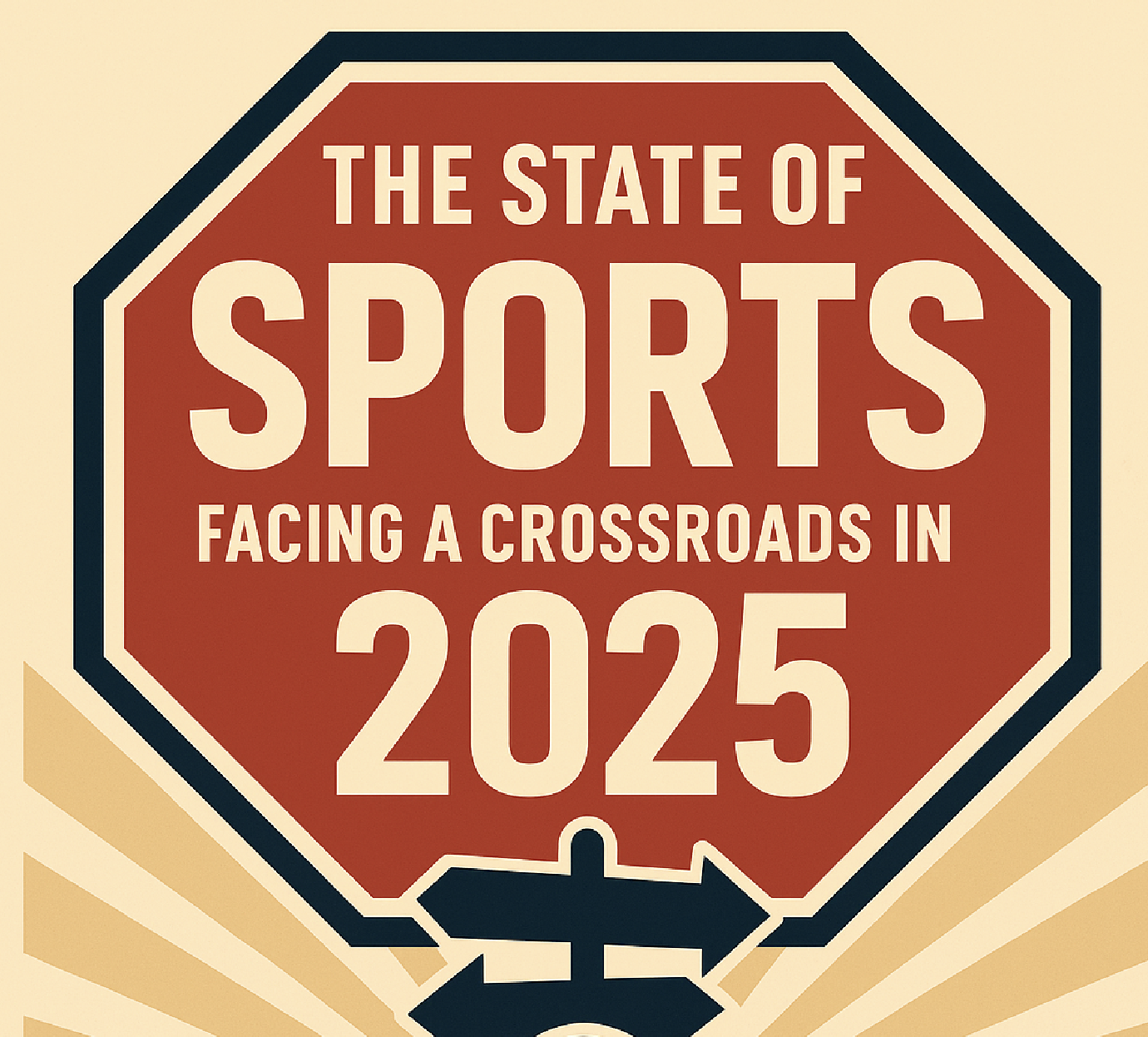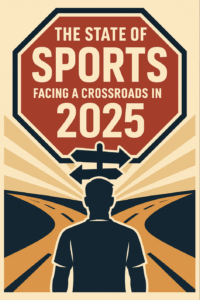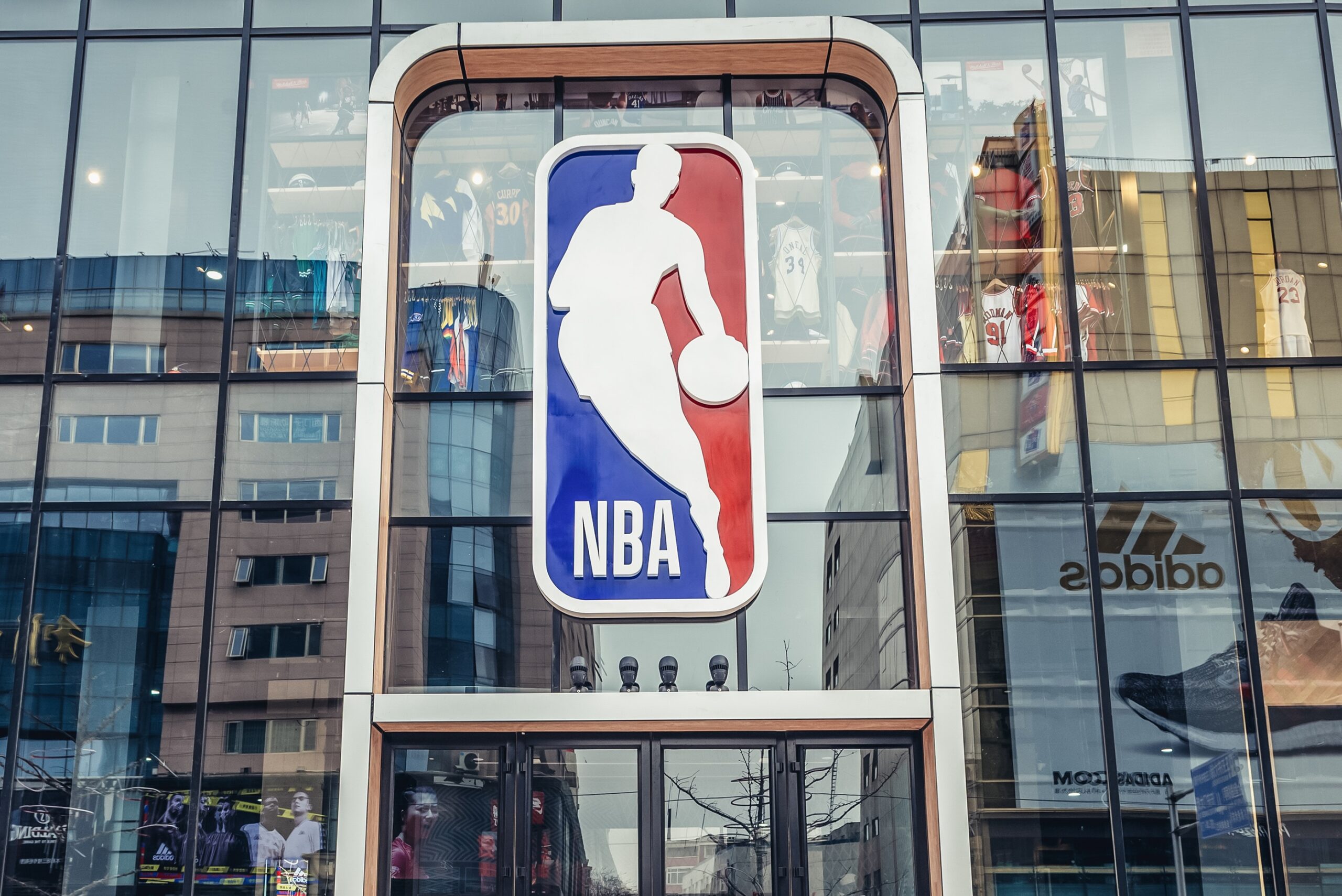
Without bold leadership and collaborative vision, the games we love risk becoming unrecognizable
The world of sports has long been a bastion of passion, unity, and tradition. But as we enter the latter half of 2025, the state of sports—particularly in the United States—finds itself at a precarious crossroads. What was once a thriving ecosystem built on talent, loyalty, and spectacle is now strained under the weight of complex challenges: financial instability, shifting legal frameworks, and a growing disconnect between institutions and their fans.
 The Crisis in College Athletics
The Crisis in College Athletics
College athletics, once celebrated as a purer form of sport driven by school pride and amateurism, has evolved into a billion-dollar business—one that is now grappling with the consequences of that transformation.
The introduction of Name, Image, and Likeness (NIL) rights was a landmark step in correcting longstanding inequities for student-athletes. But its rapid and largely unregulated implementation has ushered in a chaotic era marked by uneven playing fields, recruiting controversies, and an identity crisis within the NCAA. Compounding this are recent legal settlements, such as the House v. NCAA case, which effectively opens the door to revenue sharing between schools and athletes. While many view this as a long-overdue development, it places an enormous financial burden on non-revenue sports programs and mid-major athletic departments.
Moreover, the transfer portal—originally designed to give athletes freedom of movement—has contributed to a near free-agency model that erodes team stability and fan engagement. The result? College sports risk losing their unique community-based identity and becoming a farm system for professional leagues without the heart or consistency that once defined them.
Having lived through this we (former mid major athletic administrators) have an interesting historical perspective:
Way back (except for the Ivy League and the Stanfords), college sports was all about football and to a much lesser extent men’s basketball. The NCAA was growing by leaps and bounds. But this “everyone being equal” never sat well.
First came the College and University Divisions, then D1, 2 and 3, then D1 divides into 1A, 1AA and 1AAA, (“you can’t play D-1 basketball and D-III football!”) but, still the elephant in the room?
But in the belief of “big time” football they were paying the freight for those who wouldn’t or couldn’t spend like they did.
What to do?
Drive them out of the market by forcing them to spend more. Thus, the “broad based” concept seemingly to support Title IX and the Olympic sports.
Real reason? Drive schools out of D1 by pricing them out. Step 2: Get the TV rights for football out of the NCAA revenue stream. They couldn’t get it by vote so…form an elite group and sue the NCAA for their rights to football. They win.
But the NCAA sees a revenue light at the end of the tunnel with men’s hoops. With equality in governing there is still no way to outvote the “peons” with whom they had to share the money, so now, threaten to leave or sue to get control of hoops. It temporarily works.
They get “weighted voting” so the (lower level) peons must sing for their supper.
Not good enough!!
This broad-based approach is costing them money in areas not important to them. And then, the unthinkable: First a group of men’s hoops alumni from the power schools sues and wins for their share of being “used”. Oh well, they did help us make money, so we’ll give them something. But now, the truly unthinkable: A group of Olympic athletes led by House sues and wins a game changing settlement.
What to do?
Well, nothing else has really worked and these ungrateful peons are now costing us more than we want to spend. So, what to do? Start downsizing and get rid of the revenue drain. Use the settlement to wrest control of college athletics from the masses. And shortly, the majority will totally cave and cede total control of governance to the power group. Why would the mid majors etc. agree? “We must, or they’ll leave and take the revenue with them. So, we’ll mortgage our future to stay in a market where they really don’t want us and where we will be uncompetitive.”
This is how businesses and industries fail. But…the majority can’t philosophically even admit they are a business and are hoping the federal government bails them out like the banks. But, if that happens, like the banks, there will be significant collateral damage.
Does anyone know why Lehmann Bros. isn’t around anymore?
Major League Baseball’s Labor Tensions
Turning to the professional ranks, Major League Baseball is staring down the barrel of its own existential dilemma. Rumblings of a work stoppage are growing louder, with owners pushing for a hard salary cap to control escalating payrolls and level the competitive landscape. The players’ union, historically one of the strongest in American sports, is staunchly opposed, citing fears of suppressed wages and reduced bargaining power.
MLB has long struggled with disparities between large- and small-market teams. While franchises like the Yankees and Dodgers thrive, others are caught in cycles of rebuilding and irrelevance. A salary cap, proponents argue, would bring balance and increase parity. But such a move threatens to ignite a labor war that could derail seasons and alienate fans—many of whom are already frustrated by skyrocketing ticket prices, inconsistent streaming access, and a game often criticized for being too slow to adapt to modern audiences.
A lockout in 2026 would be devastating, particularly coming off a 2024 season that saw modest viewership gains thanks to rule changes and a surge of young talent. The question now is whether both sides can find a middle ground before the public’s patience runs out.
A Broader Malaise
Beyond specific leagues or issues, there is a general malaise settling over the sports world. Fans increasingly feel like bystanders in a corporate tug-of-war. From college realignment that destroys century-old rivalries to fragmented media rights that require multiple subscriptions to follow a single team, the fan experience is being diluted. Even the Olympics, once a global celebration of sport, are mired in political disputes and logistical controversies—evident in the backlash surrounding the 2024 Paris opening ceremony on the Seine.
At the same time, youth sports continue to be plagued by over-commercialization and rising costs, pushing lower-income families out of the pipeline and contributing to declining participation rates.
Where Do We Go From Here?
Despite these challenges, sports remain a powerful cultural force. They still inspire, unite, and provide a platform for societal change. But the current trajectory demands introspection and reform. Whether it’s a more sustainable NIL structure in college, a fair labor agreement in baseball, or a recommitment to fan-first policies across leagues, the time to act is now.
The state of sports in 2025 isn’t broken—but it is bruised. Without bold leadership and collaborative vision, the games we love risk becoming unrecognizable to the generations that made them great.
By Dave Torromeo (with contributions from long time college athletics administrator, Gene Doris)
Related content:
Settlement Approval Paves Way for NCAA Athlete Compensation

 The Crisis in College Athletics
The Crisis in College Athletics


